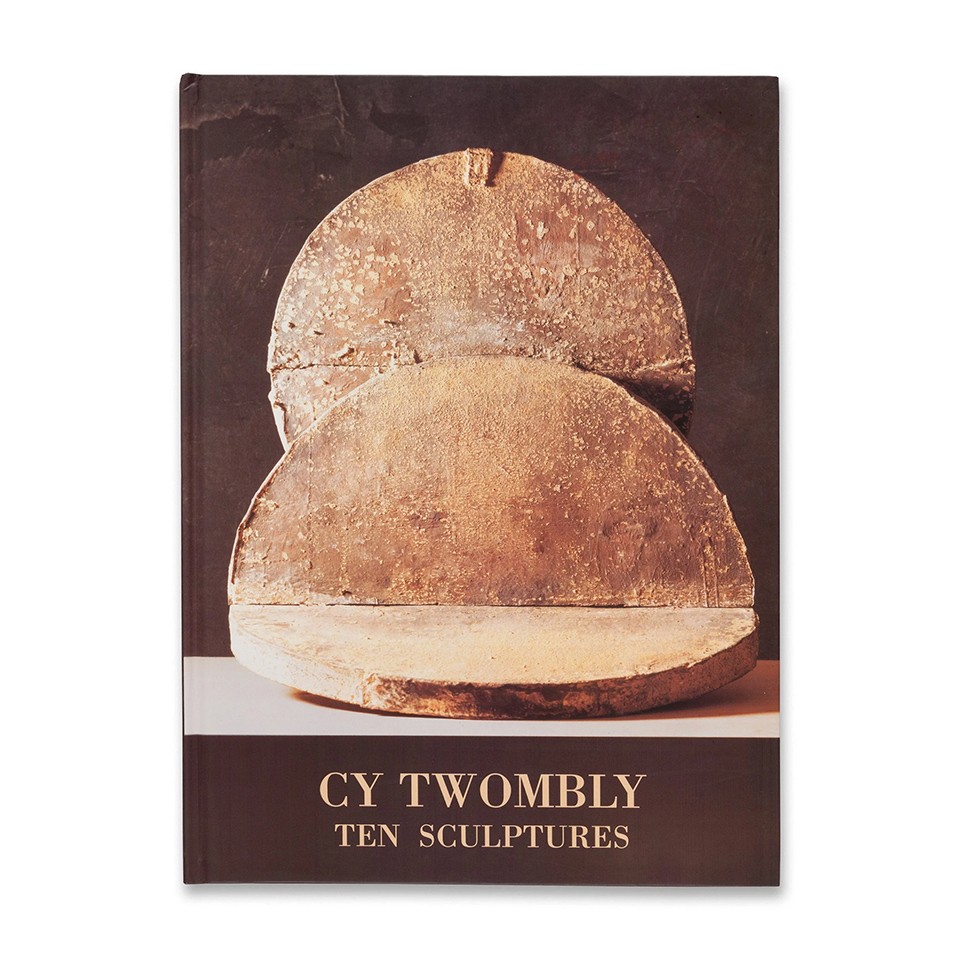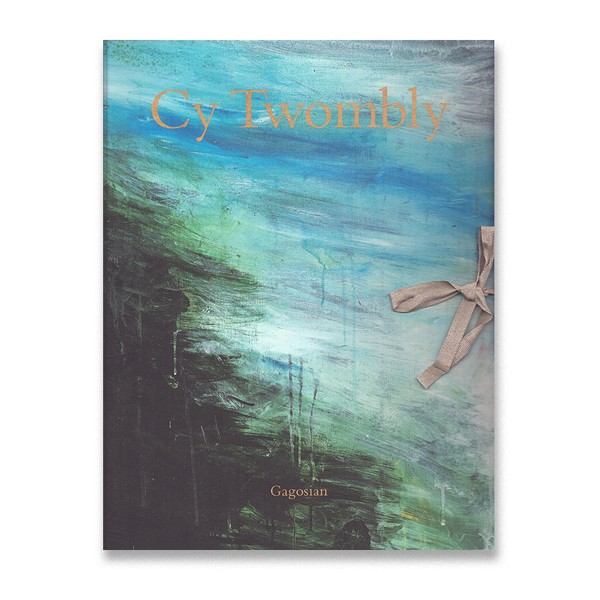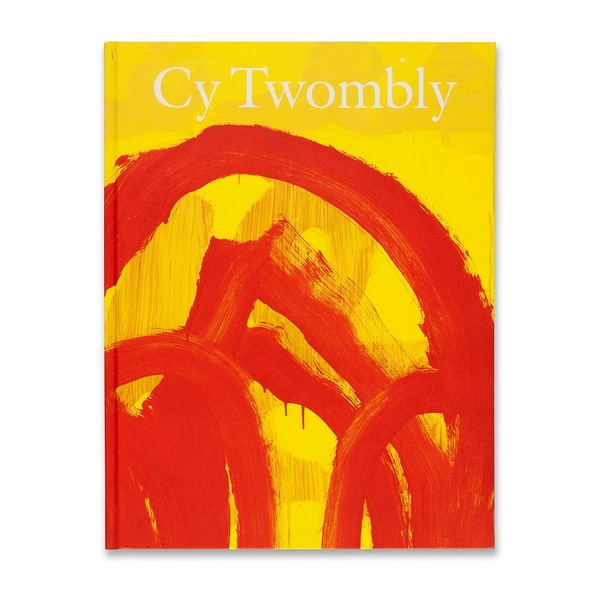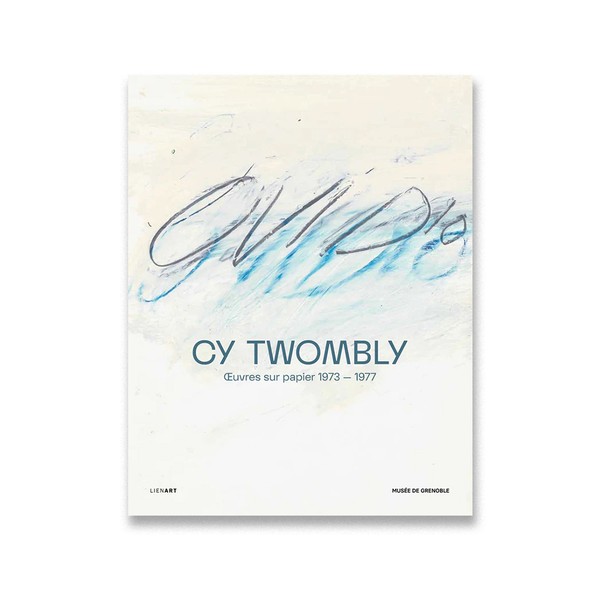Cy Twombly
Ten Sculptures

Cy Twombly: Ten Sculptures includes color reproductions and David Sylvester’s essay “The World Is Light.” Sylvester notes that, for him, both Twombly’s paintings and sculptures “induce the sensation that they are breathing light…light appears to have become a substance” (7) and that the artist identified a similar effect in marble sculptures from antiquity. He compares Twombly’s artworks to Jean-Honoré Fragonard’s, each “ethereal, intoxicating, edgy, sexy, poised” (8), and to Chaïm Soutine, “one of the first artists [Twombly] had admired…for much the same reasons he had liked German Expressionism” (8). Acknowledging the disparity of these two comparisons, Sylvester argues that “this is the very measure of Twombly’s greatness” (8). He notes Twombly’s affinity for D.H. Lawrence—specifically The Rocking-Horse Winner—and offers reflections on formal continuities throughout Twombly’s sculptural oeuvre. He argues that Twombly adheres to Paul Klee’s definition of art as “analogues to the growth of a tree…the artist’s role is to gather and pass on what comes to him from the depths” (9–10). He reflects on the paucity of attention to Twombly’s sculptures, relative to his paintings, and their role in his oeuvre as wholly distinct from that of his paintings. Drawing again on Klee and on Robert Rosenblum, Sylvester asserts that “[t]he sculptures are quite literally often like objects from archaeological sites, in form and in character… The sculptures have the scent of antiquity—often of Asian antiquity—in ways that the paintings can't” (12). He offers extended analysis of Untitled (1953), a sculpture evocative of reed pipes or, as Sylvester notes, pan pipes, followed by individual reflections on each of the ten sculptures in the exhibition. He concludes by noting that Twombly considered sculpture to be “a part of architecture” (18) and noting that “Living, looking, making: Twombly seems to be someone for whom there is no break between these” (19).
For further discussion of Twombly’s sculptures, see especially Kate Nesin’s Cy Twombly’s Things (2014), Achim Hochdörfer’s Cy Twombly: Das Skulpturale Werk (2001), and Katharina Schmidt’s Cy Twombly: Die Skulptur / The Sculpture (2000); note also that Nesin’s book offers further reflections on Untitled (1953). Additional exhibition catalogues concerning Twombly’s sculptural practice include Cy Twombly: Sculpture, published by Gagosian Gallery (2019), and Cy Twombly: Sculptures 1992–2005, published by the Alte Pinakothek München and Schirmer/Mosel (2006). Nesin’s essay for Eight Sculptures, published by Gagosian Gallery (2009) pursues a similar framing around dichotomies in Twombly’s practice.
(Publication description by Jamie Danis)
Published on the occasion of the exhibition Cy Twombly: Ten Sculptures at Gagosian Gallery, New York (November 5 – December 20, 1997).
Cy Twombly: Ten Sculpture. Edited by Nicola Del Roscio. Essay by David Sylvester. Published by Gagosian Gallery, 1997; 62 pages, b/w illustrations. English edition.



